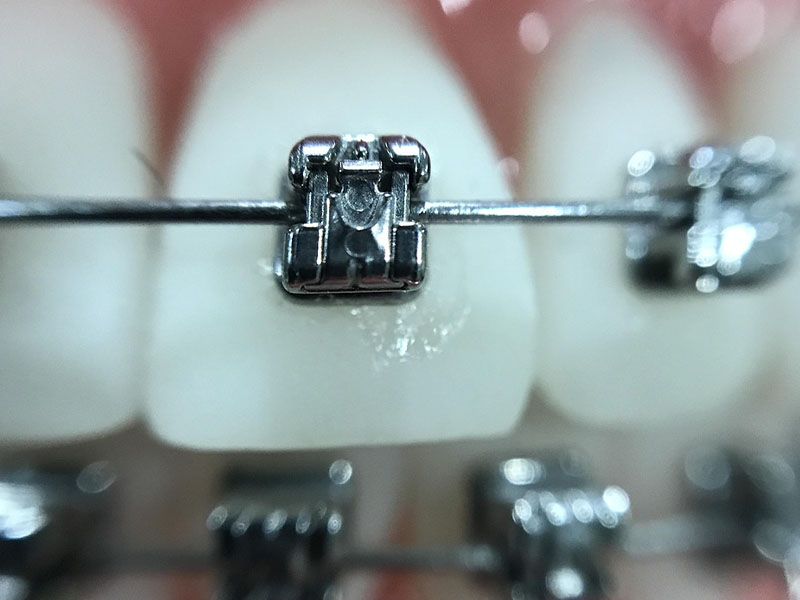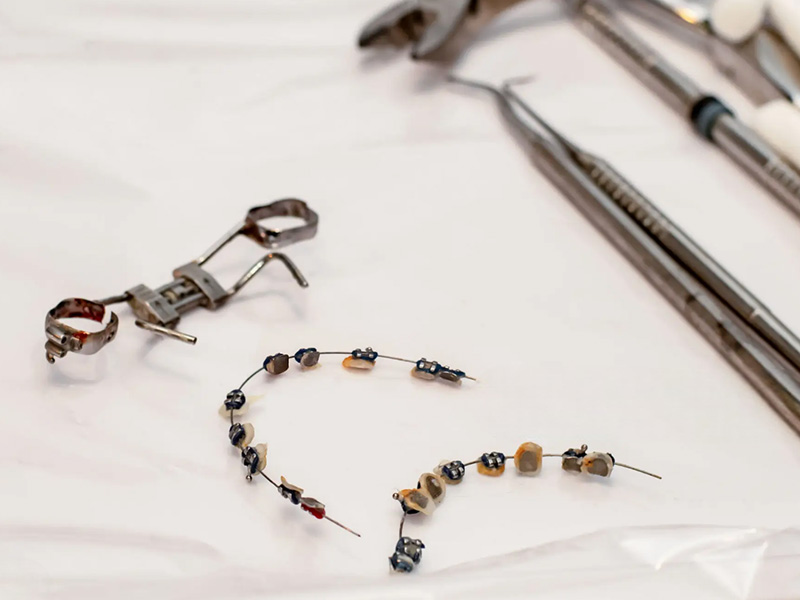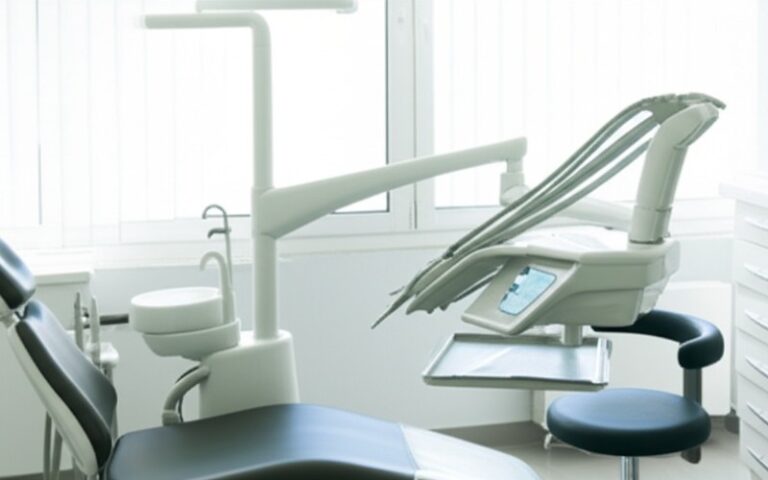
The Ultimate Guide to the Orthodontic Arch Wire: How This Simple Wire Straightens Your Tooth Alignment
In this article, I’ll explain exactly what this wire is, how it moves a tooth, and why your orthodontist changes it throughout your treatment. Understanding the arch wire will help you feel more in control and knowledgeable about your own journey to a perfect smile. This is the inside story of the most important part of your orthodontic treatment with fixed appliances.
Table of Contents
What Exactly Is an Orthodontic Arch Wire?
The first time you look closely at your new orthodontic braces, you see a lot of parts. You have the brackets, which are the small squares glued to each tooth. But the part that does the heavy lifting is the orthodontic arch wire. This is the thin metal wire that runs through a slot in each bracket, connecting all your teeth together. Think of it as the railroad track that guides the train. In this case, your teeth are the train, and the arch wire is the track guiding them to their new, straight positions. It is the engine of your whole brace.
This wire is the active component of the fixed appliance. The brackets are just handles for the wire to hold onto. Without the orthodontic archwire, the brackets would not do anything at all. The wire is shaped in a perfect U-shape, like an ideal dental arch. When your orthodontist places this wire into the brackets on your crooked teeth, the wire gets bent out of shape. Its mission, for the next several weeks, is to get back to that perfect shape, and it takes your teeth along for the ride. This is a core concept in the use in orthodontics. This simple orthodontic appliance is a marvel of engineering. The design of the wire is key to the entire orthodontic treatment process.
How Does a Simple Wire Move a Tooth?
So, how can a thin wire move a strong tooth that is set in bone? It’s all about gentle, constant pressure. The arch wire has a “memory” of its original shape. When it is tied into your brackets, it immediately starts trying to return to its original shape. This creates a light but steady push or pull on each tooth. This constant push is the orthodontic force needed for tooth movement. It’s a very clever system.
This gentle force signals your body to make changes in the bone around the tooth root. On the side the tooth is moving toward, special cells remove bone. On the side the tooth is moving away from, other cells add new bone. It’s a slow and natural process of remodeling. Your orthodontist is an expert at controlling this force. They choose a specific wire to make sure the pressure is just right. Too much force is bad for the tooth, and too little force will not move it. The wire is the tool that makes this precise orthodontic treatment possible. It is a key part of orthodontic treatment.
Why Are There Different Types of Arch Wires?
Your orthodontic treatment happens in stages, and each stage needs a different tool for the job. That’s why there are many types of arch wires. The job of the first wire is very different from the job of the last wire.
In the beginning, your teeth may be very crooked. The goal is to get them into a basic alignment. For this, the orthodontist needs a very light and flexible wire that can bend a lot without putting too much force on any one tooth. These are often called round wires. Later in the stage of treatment, when teeth are mostly straight, the orthodontist needs more control to make smaller, more detailed movements. For this, they use a stiffer, often rectangular wire. Using different wires at each stage of treatment makes the process more efficient and comfortable. There are many archwires used in orthodontic practice.

What Are the Wires Made Of? A Look at Stainless Steel.
For many years, the most common material for a wire was stainless steel. When you think of a classic brace, you are probably thinking of a stainless steel wire. This alloy is strong, it does not rust in the mouth, and it is not very expensive. The stainless steel wire is a true workhorse in the field of orthodontics. The material used has to be safe and effective.
The great thing about a stainless steel wire is that an orthodontist can easily bend it. This is very important in the later stages of orthodontic treatment. The orthodontist can put very specific, small bends in the steel wire to perfectly position a single stubborn tooth or to improve how your top and bottom teeth bite together. This type of wire holds its shape very well after it is bent, giving the doctor amazing control. Its mechanical properties make it ideal for finishing the job. This specific wire for use in orthodontics has a long history of success.
What Is a NiTi Wire and Why Is It So Special in Orthodontics?
Then came a game-changer in the world of orthodontics: the NiTi wire. NiTi stands for nickel titanium. An article in the American Journal of Orthodontics that called this alloy “shape-memory alloy.” This is the “smart wire” I talked about earlier. No matter how much you deform a niti wire by tying it to crooked teeth, it always remembers its original, perfect arch form and will try to return to its original shape.
This niti archwire is amazing because of its elastic properties. It is super elastic. This means it can deliver a very light, continuous force over a long distance. This makes it perfect for the initial stage of treatment when teeth are the most crowded and crooked. The properties of niti allow the wire to work for a long time without the orthodontist needing to adjust it. This technology, sometimes called superelastic niti wires, has made the beginning of orthodontic treatment much more comfortable for patients. These niti archwires have truly changed the game. The properties and characteristics of this wire alloy are unique.
Are There Other Types of Orthodontic Wires Used in a Brace?
While stainless steel and NiTi wire are the two most common players, they are not the only ones. The field of orthodontics is always innovating. Another important wire type is the beta-titanium wires. This type of wire is like a hybrid. It offers a force level that is in between a niti wire and a stainless steel wire. It has good elasticity, but an orthodontist can still bend it to make adjustments, which is difficult to do with a NiTi wire.
Researchers are always looking for a new orthodontic alloy.A study in the Journal of Orthodontics and Dentofacial Orthopedics compared different wires. They talked about wires made of multiple materials braided together or coated with different substances to reduce friction. Some wires are even tooth-colored to look better. For example, some research, like that on the japanese niti alloy wire, continues to improve the niti alloy wire for use in a brace. The goal is always to find newer materials that can make orthodontic care faster, more comfortable, and more efficient. There are more than just three types of wire.
How Does My Orthodontist Choose the Right Wire for My Appliance?
Choosing the right arch wire is a science and an art. Your orthodontist doesn’t just grab any wire. They have a detailed plan for your teeth from day one. At each appointment, they assess the progress of your tooth movement. Based on this, they select the perfect type of archwire for the next stage of treatment. This is a critical decision in your orthodontic treatment.
The choice depends on many things. What is the goal of this stage? Is it the initial alignment? Is it closing spaces? Or is it the final detailing? The orthodontist considers the mechanical properties of the wire—how flexible, strong, and springy it is. They will look at your dental arch, perhaps just the lower arch or upper arch, and decide what is needed. For example, the wires to align teeth at the start need to be gentle. A good orthodontist has a deep understanding of how each wire will affect your teeth and the surrounding bone. It’s a key part of their expertise in orthodontics.
What Happens During the Initial Stage of Treatment with a Fixed Appliance?
The initial stage of your orthodontic treatment with fixed appliances is all about untangling the crowd. This initial phase is when your teeth are at their most crooked positions. The goal here is simple: leveling and alignment. To do this, the orthodontist uses the most flexible and gentle archwires available. This is almost always a light, round wires made of nickel-titanium.
This first wire may look like it’s not doing much, but it’s working hard. The niti archwire is placed in the wire slot of each bracket. Because the wire is so elastic, it applies a very light, steady force that begins the process of tooth movement. This gentle start is very important for the health of your teeth and gums while you are undergoing orthodontic treatment. This is why the use in orthodontics of flexible archwires is so important for the initial work. Some systems, like Speed System Orthodontics or Rocky Mountain Orthodontics, have specific wires used for initial alignment.

Why Do They Bend the Arch Wire Near the End of Treatment?
As you get close to the end of treatment, your teeth will look very straight. You might wonder why you still need to wear your brace. This is the finishing and detailing stage. Your orthodontist will now likely use a stiff wire, probably a rectangular stainless steel wire. The stiffness of this wire gives them ultimate control over the final tooth position.
The orthodontist will place small, precise bends in the arch wire before putting it in your mouth. One little bend might be to slightly rotate a single tooth. Another bend might be to slightly raise or lower a tooth so it lines up perfectly with its neighbors. This is how they achieve a beautiful smile and a healthy, functional bite. The ability to bend a wire is a skill that takes years to master and is a vital part of high-quality orthodontics. An article in the Australian Orthodontic journal that described this finishing process in great detail.
What Does the Future Hold for Orthodontic Archwires?
The world of orthodontic archwires is not standing still. Researchers and companies are constantly working on the next generation of archwires. What does the future hold? One major area of research is in “robotic” wire bending, where a computer plan bends a wire with perfect precision for each patient.
We are also seeing newer materials being developed. Imagine a wire that could change its stiffness during treatment. It could start out very flexible and then become stiffer on its own, reducing the number of appointments you need. Some studies have even explored “smart” archwires that can tell the orthodontist how much force is being applied to the teeth. As science advances, the simple arch wire will continue to get smarter, making orthodontic treatment in patients even better. The future of the wire is bright in the field of orthodontics.




